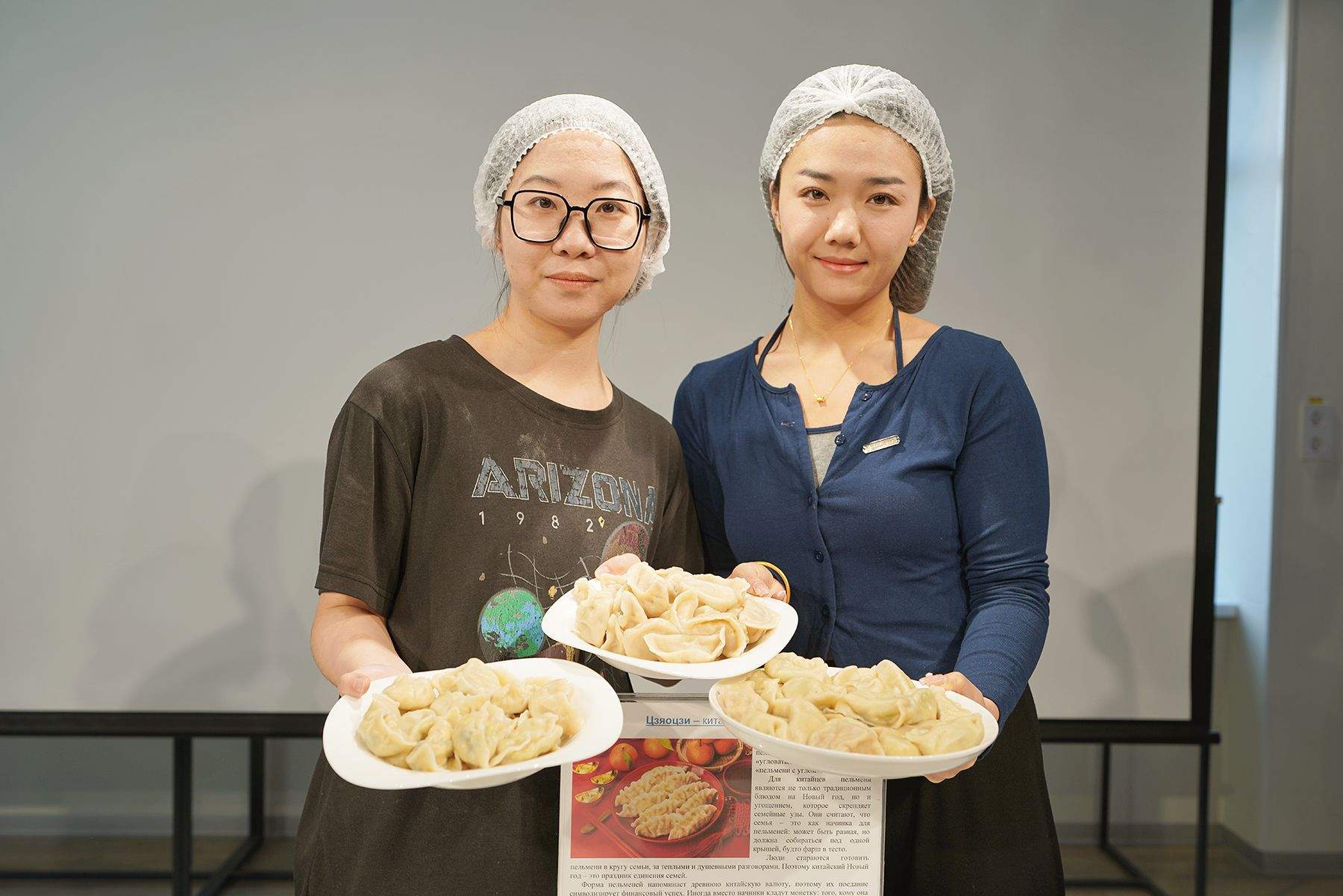International Dumpling Day was celebrated at VVSU

Chireng, jiaoji, chuchvara, sambusa, buuza or just dumplings! VVSU students from Indonesia, Uzbekistan, China, Egypt and Russia prepared their national varieties of their favorite student dish in a student kitchen.
“The easiest and most pleasant way to learn about culture of other people is through the cuisine. Anyone who loves to cook, who likes to try interesting dishes of other countries, will certainly be interested in the features of the culinary traditions of those people,” said Marina Levchenko, director of the VVSU campus.
According to students, dumplings and their international analogues are very comfort food. Nourishing, fast, tasty and extremely varied. The dough can be made stiff and thick, or it can be delicate and transparent. You can put meat, vegetables, seafood, even fruits inside. The ingredients stand upon geography.
“The purpose of our event is to show that despite the fact that children from different countries come to study at our university, there is a dish that unites everyone. Today they can talk about the peculiarities of national traditions in the preparation of this dish,” noted Tatyana Samofalova, mentor of VVSU dormitory No. 1.
For example, in Indonesian cuisine there is no dish called “dumplings,” but there are many dishes similar in composition and appearance to dumplings. One of them is chireng.
“Chireng is a dough stuffed with spicy shredded chicken with spicy seasonings. In Indonesia, this dish is considered a street food. It was interesting for us to take part in such an unusual event. It was very fun to cook in the same kitchen with other guys from different countries,” said Andini Yulia Sari and Maria Benedikta Ungkujai, students of the Institute of International Business, Economics and Management.
Students from China Yanbo Sun and Jiaxin Jing prepared Chinese dumplings “jiaoji”.
“For us, dumplings are not only a traditional dish for the New Year, but also a treat that strengthens family ties. Family is like the filling for dumplings: it can be different, but it must be gathered under one roof, like minced meat in dough. In addition, the shape resembles ancient Chinese currency, so eating them symbolizes financial success”, the students said.
The chuchvar dish was prepared by students of the School of Engineering Abrorkhon Akhrorkhonov Nurullokhon ugli and Fazliddin Gopporjonov Kodirjon ugli from Uzbekistan. Uzbek chuchvara have several important differences from our dumplings: they are smaller in size, and the minced meat is made from finely chopped, rather than ground, meat and pork is never used.
“It was very interesting and funny to cook our national analogues of Russian dumplings in the same kitchen with students from different countries. We had a fun time and got to know each other better. “Thank you to the organizers for such an event,” the students noted.
A hearty dish with a unique aroma of the East was prepared by Egyptian students Omar Elmoatazbellah Mansour Hamed and Yahia Zakria Ali Mohamed Mousa. According to Omar, he was surprised when he first learned about dumplings and that they need to be boiled.
“Every time, looking at frozen dumplings, I thought that they needed to be baked in the oven, because there was dough. We don’t have such dishes in Egypt, but we do have one similar dish: sambusa – pies stuffed with meat, onions, spices and nuts. My friend and I spent the whole night making dough. Today we have fried sambusa, but we usually bake them,” the student shared.
And students from Russia Aliona Melnikova, Anastasia Ivanova and Konstantsia Kalashnikova presented Russian dumplings and buuz, a national Buryat dish, for tasting.
“This event allowed me to learn a lot about the history of dumplings, try different types, and get to know guys from other countries better,” shared student Aliona Melnikova.
While not everyone knew how to make dumplings professionally, they all performed excellently during the tasting. A shared dinner and friendly conversations were a wonderful end to the evening.













